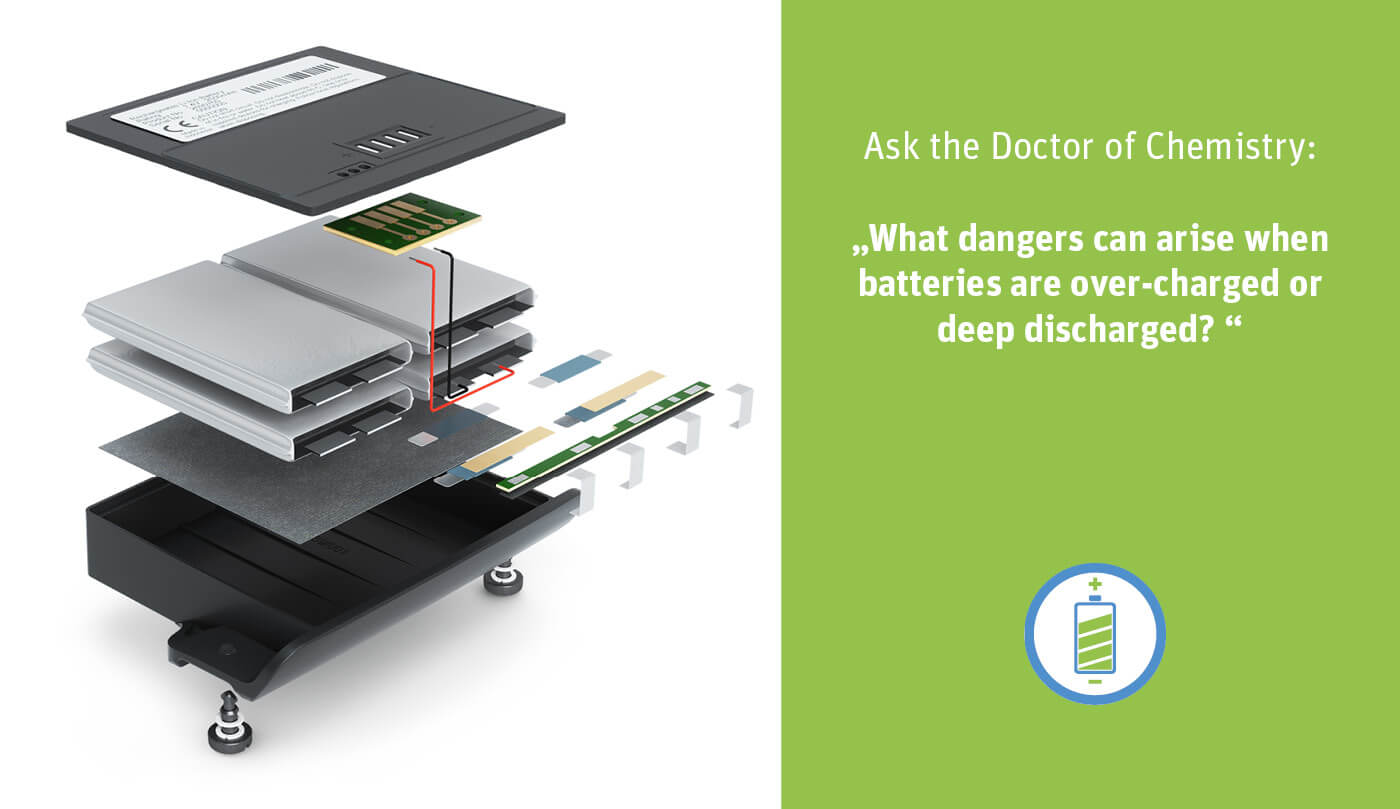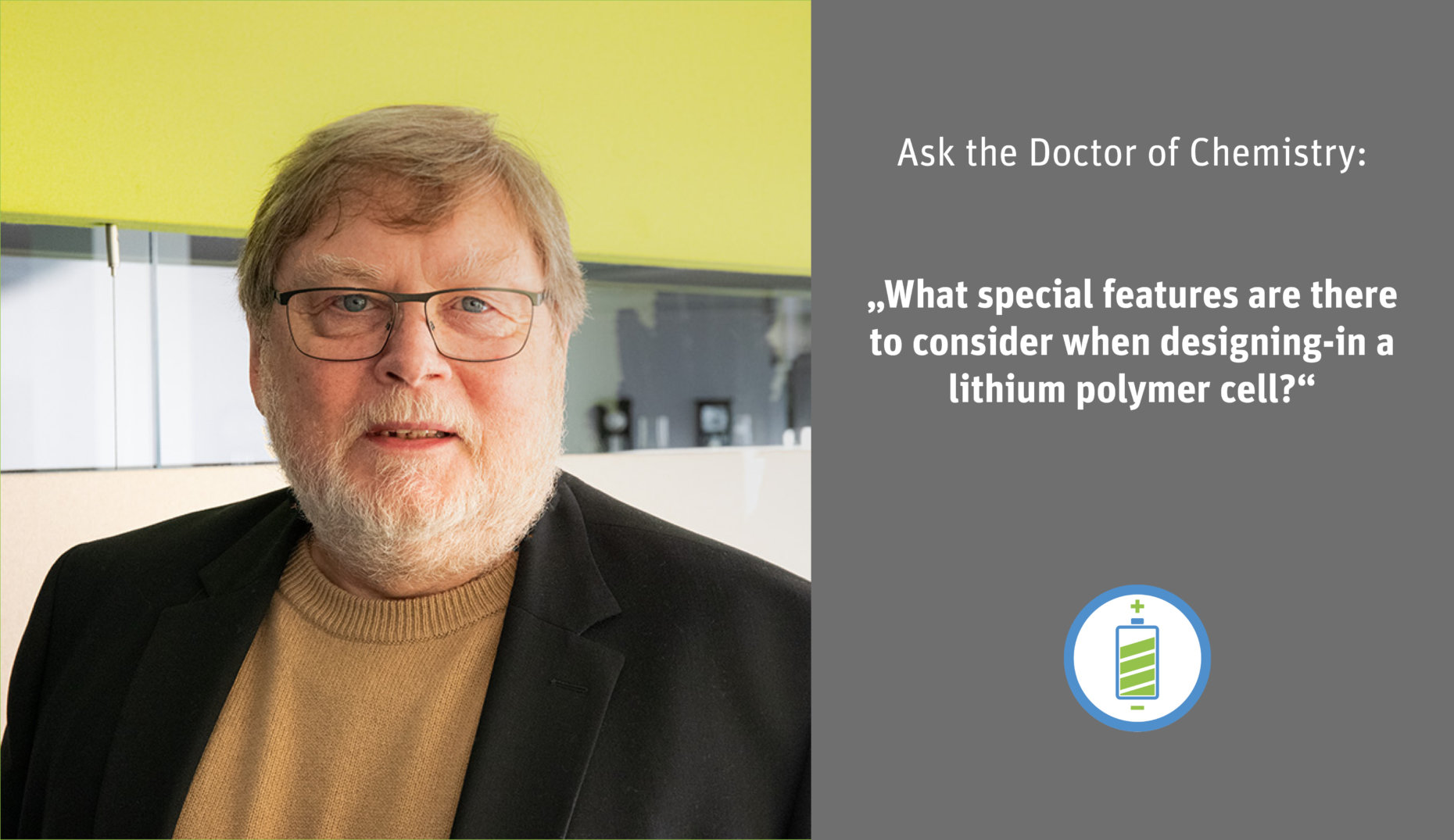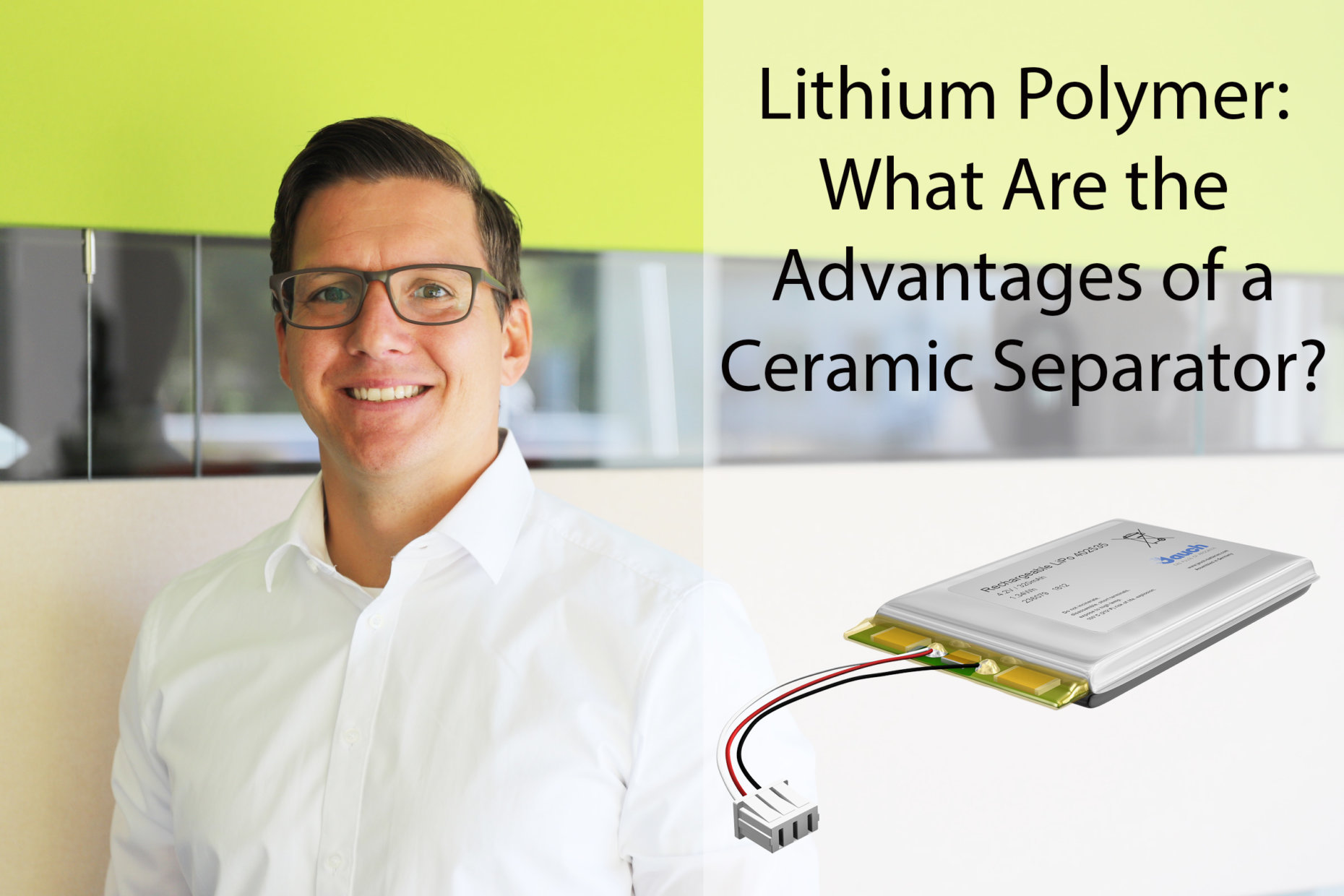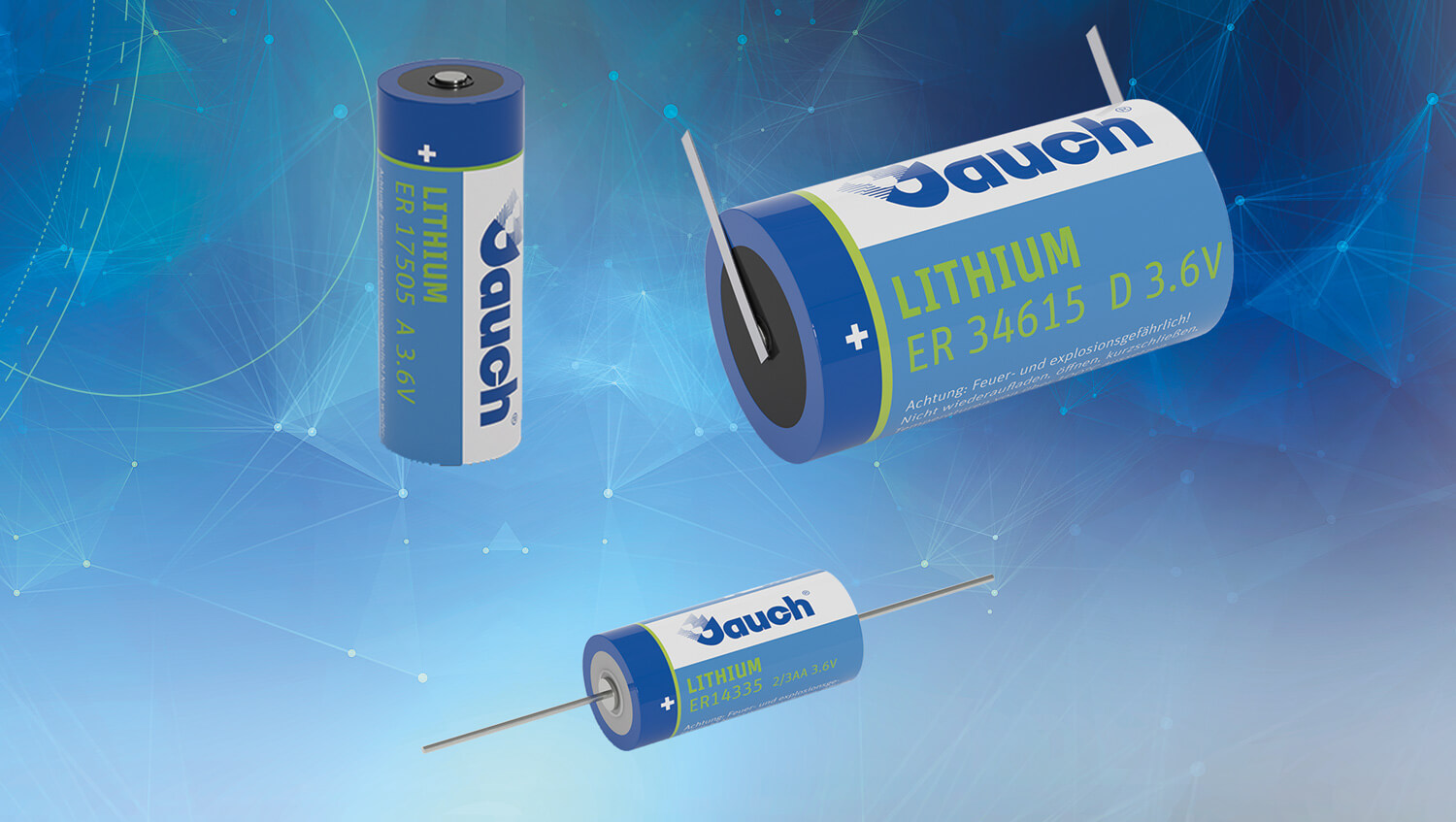What actually happens when lithium batteries are over-charged or deep discharged?
Charging Process: Lithium-batteries are charged with constant current until a voltage of 4.2 V is reached at the cells. Next, the voltage is kept constant, and charging continues for a certain time. The charger then switches off further charging either after a preset time or when a minimum current is reached. In the rare event
- Published in Battery Technology
What special features are there to consider when designing-in a lithium polymer cell?
What special features are there to consider when designing-in a lithium polymer cell? An important point, according to battery expert Dr Jürgen Heydecke, is certainly the so-called “swelling”, the natural swelling of a lithium polymer cell in a fully charged state and over cycles. A fully charged cell is thicker than a discharged one. During
- Published in Battery Technology
Lithium Polymer: More Safety Thanks to Ceramic Separators
Whether you speak of lead-acid, alkaline or lithium batteries, none of them can work without a separator which parts the positively and negatively charged electrodes. The separator prevents direct contact between the two poles and thus avoids a short circuit of the battery. It is therefore considered the essential safety feature of a cell. Even
- Published in Battery Technology
Advantages and Special Characteristics of Lithium Thionyl Chloride Batteries
Lithium thionyl chloride batteries (Li/SOCl₂) belong to the lithium primary cell family. Unlike lithium ion or lithium polymer batteries, these cells cannot be recharged once they have been discharged. However, due to their long lifetime, this characteristic is of little importance in everyday use. In fact, lithium thionyl chloride batteries supply power to applications for
- Published in Battery Technology


 Deutsch
Deutsch 


